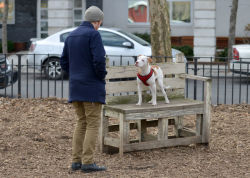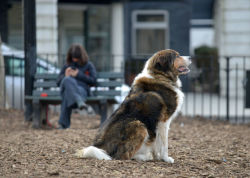Cooper Park
Cooper Park
Philanthropist, industrialist and inventor--Peter Cooper (1791-1883) was a native New Yorker and workingman’s son with less than a year of formal schooling, who became one of the most successful American businessmen of his day. He made his fortune in iron, glue, railroads, real estate and communications. His inventions include the first trans-Atlantic telegraph cable and Tom Thumb, America’s first functioning steam engine. Cooper also invented Jello--with help from his wife, Sarah, who added fruit to his clarified gelatin. Despite his many successful ventures, Cooper captured only 81,737 popular votes in his 1876 bid for the presidency as a candidate from the Greenback Party.
Peter Cooper dedicated his life and wealth to philanthropy, to ensure that immigrants and children of the working class would have access to the education that he never had. Believing that education should be “as free as water or air,” in 1859 he established the Cooper Union for the Advancement of Science and Art, a coeducational college which continues to provide students with full-tuition scholarships in architecture, art, and engineering. Celebrated features of the institution included a free reading room and the Great Hall, which provided the setting for one of Abraham Lincoln’s campaign speeches on February 27, 1860.
In 1821 Cooper purchased a working glue factory in Kips Bay, and manufactured high quality glue economically. He stated, “I determined to make the best glue, and found out every method and ingredient looking to that end, and so it has always been in demand.” In 1838 he relocated the business to Maspeth Avenue in Brooklyn, a strategic site which had access to roads connecting with New York-bound ferries and Long Island farms. Cooper retired from the glue business in 1865 and sold the factory to family members. The company moved to Smith Island in Newtown Creek in 1878 and left Brooklyn for good in the 20th century. The Gowanda, New York headquarters of the Peter Cooper Glue Company closed in the early 1990s.
In 1895 Cooper’s descendants sold the site of the old glue factory to the City of Brooklyn for $55,000. Within a year the site, known as Cooper Park, was outfitted with a playground and landscaping. By 1905 the limestone and brick shelter pavilion had been erected. In the late 1930s construction carried out by the Works Progress Administration transformed Cooper Park into a modern recreational facility. New features included a roller-skating track, sitting area, horseshoe and shuffleboard courts, wading pool, play areas for children and tots, and two softball diamonds with bleachers.
A major reconstruction project in 1965 removed the track and wading pool and added basketball and handball courts, game tables, boccie courts, and painted games. New play equipment, representing 1960s innovations in playground design, included an arcade climber, spiral/helical slide, mountain climber, hexapod, and ups ’n downs.
Check out your park's Vital Signs
Clean & Safe
Green & Resilient
Empowered & Engaged Users
Share your feedback or learn more about how this park is part of a
Vital Park System



